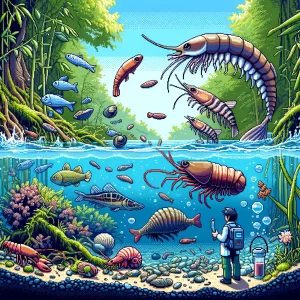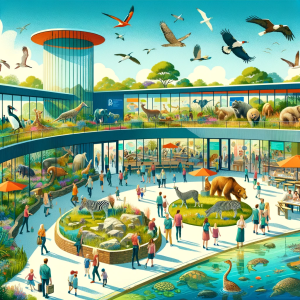
Conservation Efforts Falling Short
The world is home to a rich diversity of life, but many species are teetering on the brink of extinction. According to recent research published in Nature, conservation efforts are not keeping pace with the threats facing these species. Using data from the International Union for Conservation of Nature (IUCN) Red List and other global databases, scientists have found that many species at risk from habitat loss, overexploitation for international trade, and invasive species are not receiving adequate protection. This blog delves into the findings and their implications, highlighting the urgent need for more effective conservation actions.
Understanding the Crisis
The study analyzed the conservation status of 5,963 threatened terrestrial species, focusing on three major threats: habitat loss, overexploitation for international trade, and invasive species. These threats are responsible for driving many species toward extinction. The research revealed a startling reality: for 58% of these species, conservation interventions are either insufficient or absent. This lack of adequate protection poses a significant challenge to biodiversity conservation.
Habitat Loss: The Greatest Threat
Habitat loss is a leading cause of biodiversity decline. When forests are cleared for agriculture or urban development, species lose their homes. The study found that only 9% of species threatened by habitat loss have sufficient representation in protected areas (PAs). Even when species are found within PAs, the quality of management and enforcement can vary, reducing the effectiveness of these protections. Small-ranged species, in particular, are poorly represented in the current PA network, highlighting the need for more targeted conservation efforts.
Overexploitation and Invasive Species
Overexploitation for international trade and the impact of invasive species are also significant threats. The study found that 76% of species threatened by international trade have some form of trade control in place. However, this still leaves a substantial number of species vulnerable. Invasive species, such as the chytrid fungus affecting amphibians, pose a severe threat, with only 15% of species receiving adequate invasive species control measures.
Geographic and Taxonomic Disparities
The distribution of conservation efforts is uneven across different regions and taxonomic groups. For example, amphibians in Central America and mammals in Indonesia lack meaningful habitat protection. Birds in South America, Central America, and Indonesia are also unprotected. This geographic variability suggests that some regions and species groups are being neglected, possibly due to limited resources and capacity for conservation.
The Role of Conservation Databases
The IUCN Red List is a crucial tool for assessing species’ extinction risk and tracking conservation interventions. However, the study found gaps in the documentation of conservation actions. Interventions may occur for many species but are not recorded in major conservation databases. Improving the documentation and reporting of conservation actions is essential for understanding what works and where gaps remain.
Critical Needs
The findings underscore the urgent need for increased and better-targeted conservation efforts. Protected areas play a critical role in safeguarding biodiversity, but they are not a panacea. Other measures, such as habitat restoration, trade control, and invasive species management, are equally important. Moreover, conservation actions must be tailored to the specific needs of each species and region.
Success Stories and Lessons Learned
Despite the challenges, success stories demonstrate the potential for effective conservation. For instance, well-managed protected areas and invasive species eradication efforts on islands have shown positive results. The study highlights the importance of learning from these successes and applying these lessons more broadly.
Moving Forward: Global Commitments and Local Actions
The international community has made significant commitments to biodiversity conservation, such as the Kunming–Montreal Global Biodiversity Framework, which aims to protect at least 30% of terrestrial and marine ecosystems by 2030. Achieving these targets will require coordinated efforts at both global and local levels. Key biodiversity areas, especially those managed by indigenous communities, are crucial for achieving meaningful conservation outcomes.
Conclusion
The research provides a sobering assessment of the current state of conservation efforts worldwide. While there are notable successes, the overall picture is one of insufficient and uneven protection for many threatened species. Addressing these shortcomings requires increased resources, better documentation, and more strategic allocation of conservation efforts. By taking these steps, we can hope to reverse the decline and ensure a future for the world’s biodiversity.
Let us know your thoughts in the comments:
- What are some local conservation efforts in your area, and how effective do you think they are?
- How can individuals contribute to global conservation efforts, even if they live far from the areas most affected by biodiversity loss?
Unlock Science Secrets:
Discover revolutionary research and innovative discoveries with ‘This Week in Science’! Designed for educators and science lovers, our free weekly newsletter offers insights that can transform your approach to science. Sign up now and deepen your understanding and passion for science.



